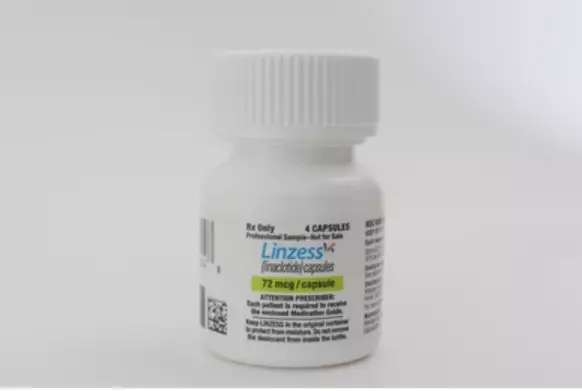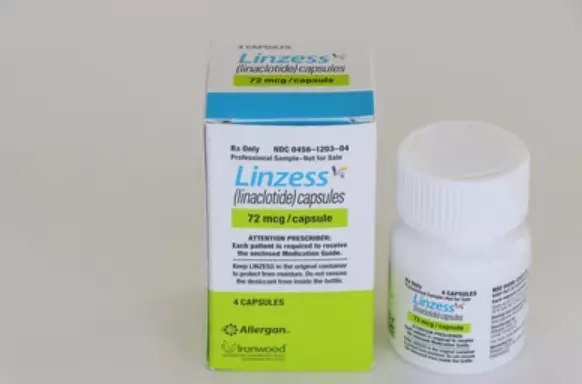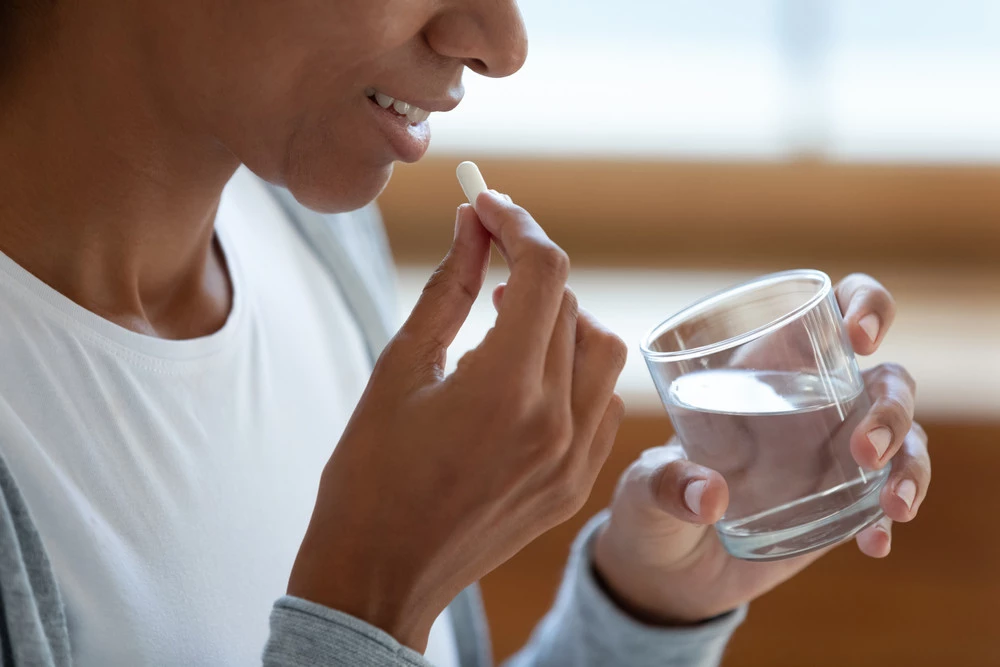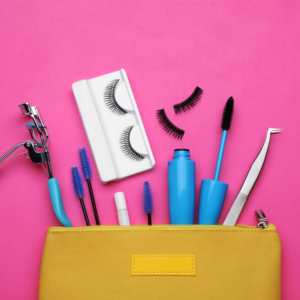Linzess may result in negative effects. As the drug is not readily absorbed into your blood, the most frequent side effects are typically modest and limited to the bowels. Find out more about the most typical Linzess pros and cons.
Table of Contents
What is Linzess?
 Pin It
Pin ItThe brand name of a prescription drug by AbbVie and Ironwood Pharmaceuticals is Linzess (linaclotide). It is not a laxative but is used to relieve constipation. It is typically used for: Irritable bowel syndrome with constipation (IBS) and chronic idiopathic constipation (CIC) (IBSC)
By easing any digestive discomfort and encouraging more fluids to pass through your bowels, linzess relieves constipation. Your stools become softer as a result, making them simpler to pass.
When you have an empty stomach, you should ingest the capsule form of the drug. It is often taken before your first meal once a day.
When someone is constipated, they have trouble passing a stool. They may feel bloated and in pain, and their faeces may be firm and dry. Haemorrhoids, anal fissures, and fecal impaction may result from this. Constipation that lasts for a few weeks or longer is referred to as chronic constipation. Irritable bowel syndrome (IBS) is a group of diseases that can lead to constipation and digestive issues like abdominal pain. If your intestines are blocked, you shouldn’t take linaclotide.
Pros of Linzess
 Pin It
Pin ItIBS-C sufferers can benefit from Linzess, also licenced for use in this condition by the US Food and Drug Administration. Its mode of action to treat IBS-related constipation symptoms is well understood.
For all adults who don’t have any known allergies, it is typically harmless. After using it for two weeks, patients may experience a considerable improvement in their symptoms. It makes the digestive region more water-rich, lessening hard stool symptoms and constipation.
Side effects
According to data from clinical trials, common side effects can include:
Gastrointestinal adverse symptoms such as nausea, dizziness, stomach pain, bloating (abdominal distension), and diarrhea
Sinusitis and upper respiratory tract infections are examples of infection side effects.
Among the less frequent side effects are:
Gastroenteritis virus
Allergic symptoms, such as hives
Terrible diarrhea
A terrible stomach ache
Although Linzess frequently causes diarrhea, it should go away. If the diarrhea is severe, lasts longer than seven days, or causes you to feel weak, lightheaded, or dizzy (signs of dehydration), stop taking the medication and call your doctor. Linzess-induced diarrhea can impair the effectiveness of other medications, particularly those requiring precise dosages. If side effects continue, you can be given a different medication, like Amitiza.
You should use other forms of birth control when using Linzess since prolonged diarrhea could prevent the birth control drug from working. It is unknown if this medication passes into breast milk. Before breastfeeding, speak with your doctor.
How to prevent side effects from Linzess
There are some things you may do to lessen the severity of Linzess side effects, even though it may not be able to avoid them:
1. Always take the prescribed dose
Every morning, take the prescribed dose that has been advised by your healthcare provider 30 minutes before your first meal of the day. The effectiveness of Linzess depends on how strictly you stick to this schedule and how frequently you take your medicine.
If you forget to take a dose of this medication, skip it and resume your regular dosing plan. Not two dosages at once. For more details on the medications, consult the medication guide.
2. Properly store linzess
Linzess should be kept in its original container at room temperature and dry location. To ensure your prescription stays as effective as possible, it’s critical to know how to keep it properly. Taking medication that has been outdated or incorrectly stored could prevent it from performing as intended and potentially result in undesirable side effects. To avoid excess moisture harming the drug, it’s also crucial to keep the drying agent that comes in the bottle inside the bottle. The bottle must be tightly shut.
3. Medical history Discussion
It’s crucial to go over your medical history with your healthcare practitioner so they can assess how well Linzess will function for you. List all prescription medications in full, along with any over-the-counter medications, dietary supplements, and any existing medical problems. Your doctor can identify any drug interactions with Linzess that could raise the likelihood of side effects by conversing with you.
4. Be mindful of your body
It’s crucial to pay attention to how your body is feeling when using Linzess. Tell your doctor immediately if you begin to suffer any negative effects from taking Linzess.
Linzess dosage
 Pin It
Pin ItLinzess is taking by mouth and is available in capsule form. There are three capsules doses: 72 mcg, 145 mcg, and 290 mcg.
Dose for adults
The U.S. Food and Drug Administration (FDA) have given Linzess the go-ahead for oral administration to treat individuals with chronic idiopathic constipation, also known as IBS-C. Adults with chronic constipation or IBS-C who did not react to conventional treatments are also treated with it.
Dose for constipation and irritable bowel syndrome
One of the three kinds of irritable bowel syndrome, IBS-C, may benefit from using linzess to lessen its symptoms. This subtype causes bloating, flatulence, and stomach pain in addition to chronic constipation. A 290 mcg capsule taken orally once a day at least 30 minutes before your first meal is the suggested oral dosage.
Dose for idiopathic chronic constipation
Additionally, chronic idiopathic constipation is treated with linzess. Hard stools, stomach pain, and straining are all symptoms of this subtype of persistent constipation. A 145 mcg pill taken once daily, at least 30 minutes before the first meal is the recommended dosage. Patients who tolerate the medication poorly can benefit from a lesser dose of a 72 mcg capsule taken once day. Never chew, break, or chew a capsule. If the capsule cannot be swallowed whole, it can be opened and sprinkled on a teaspoon of room-temperature applesauce, provided it is consumed immediately. You can also combine the capsule’s contents with 30 mL of water. The whole mixture should be taken right away after being completely combined.
Dosage for children
Pediatric patients under 6 should not use linzess, which is contraindicated. Within 24 hours of dosing, Linzess-treated neonatal mice died from dehydration in non-clinical studies. It is unknown whether Linzess is safe and effective for use in patients under the age of 18. Due to the mortality observed in mice and the dearth of information on pediatric patients, children under 18 shouldn’t take Linzess. Linzess should be kept safely out of children’s reach.
Use of Linzess
 Pin It
Pin ItLinzess is ingested once every day. It needs to be consumed at least 30 minutes before your morning meal. It’s crucial to adhere to the directions on your prescription label or your doctor’s advice. A single dose should be taken each day.
How much medication to take will be determined by your doctor. Utilize only as prescribed.
Take Linzess empty-handed and at least 30 minutes before breakfast or your morning meal.
Completely inhale the capsule. Please don’t eat it, break it, or crush it. Adults who have trouble swallowing can immediately ingest the capsule’s contents after mixing them with water or applesauce.
The preparation of the dosage in this way is covered in depth in the Medication Guide.
A medication guide ought to be included with this medication. If you don’t have a copy, ask your pharmacist for one. Important information regarding the medication, such as adverse effects and warnings, can be found in the medication guide. Each time you fill or renew your prescription, carefully read the advice, and if you have any questions or concerns, speak with a healthcare professional.
If a dose is missed, skip it and resume your regular dosing plan. Not two dosages at once.
The medication should be kept at room temperature in a closed container. A dry location away from heat and direct light is a must. Please keep it in the original container until you are ready to take the medication. A desiccant package in the bottle helps shield the capsules from moisture. Never take the package out of the bottle. Avoid swallow the desiccant packet.
You can mix the capsule’s contents with water or applesauce if you have problems swallowing it. Add to applesauce: On one teaspoon of applesauce at room temperature should be sprinkle the beads after opening the capsule. Without chewing, immediately ingest the combination. Don’t keep it for a future use. Mix with water.
The beads should be added to a clean cup with 30 mL (1 ounce) of water after the capsule is opened. For at least 20 seconds, gently stir. Immediately swallow the entire combination. Swirl in 30 mL (1 ounce) more water before adding it to the cup. Immediately sip on some water to ensure all the medication is consumed. Don’t keep it for a future use. A nasogastric or gastric feeding tube can also be used with the water combination. Flush the tube with at least 10 mL (2 teaspoons) of water after giving the mixture.
Read for more related blog: Foods to avoid while on Saxenda
FAQS
How long does Linzess take to work?
Linzess doesn’t instantly manifest its therapeutic benefits because it is not a laxative. Most people take the medication for at least a week before noticing a difference or feeling relief from constipation. Only after taking the medication consistently for 12 weeks are improvements shown in IBS patients with constipation.
Who should not take Linzess?
Patients under 18 should not take Linzess due to the danger of acute dehydration, which could be fatal. A black box warning on this drug advises against using it in patients under 6 years old and avoiding it in patients under 18 years old.
How long does it take for Linzess to take effect?
Constipation relief from using LINZESS every day usually takes approximately a week. Patients with IBS-C may feel better in approximately a week, with symptoms typically improving over 12 weeks.
Can you skip LINZESS a day?
The next dose of Linzess should be taken the following day before your first meal if you miss a dose. For more details on the medications, consult the medication guide. You shouldn’t chew or crush Linzess.
What are the dangers of LINZESS?
Your child may experience severe dehydration from LINZESS’s severe diarrheal side effects. If your doctor has told you with a bowel obstruction, you should not take LINZESS.
Does LINZESS clean out your colon?
You can poop with Linzess, that’s true! This drug aids in softening stools and encourages bowel motions by increasing chloride and water secretion in the intestines. Additionally, it facilitates more regular and full bowel movements.
Can your bowels become dependent on LINZESS?
Linzess is not known to lead to drug dependence or withdrawal symptoms. When you stop taking a drug your body has been accustomed to, withdrawal may set in. Typical withdrawal symptoms include nausea, sweat, and mood swings. Dependency may arise when you require medication to feel as you normally do.
How long can you stay on LINZESS?
How long you can take Linzess is unknown. Your doctor will choose how frequently and for how long to take the drug after prescribing it. Long-term trials followed patients who took Linzess for up to 18 months at 290 mcg per day.
Thanks for reading our, please visit our website for more amazing content 5elifestyle



